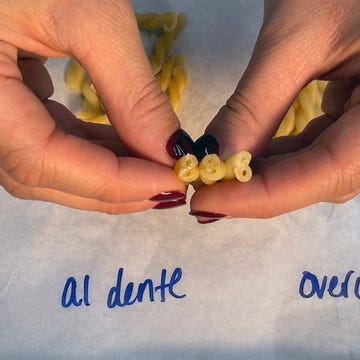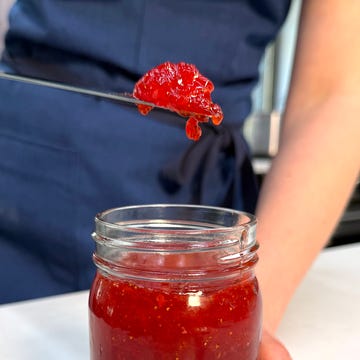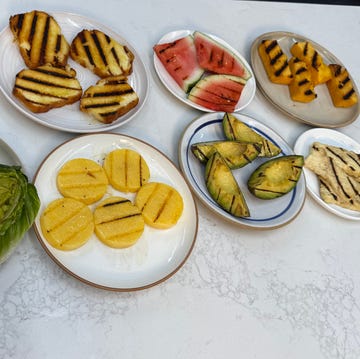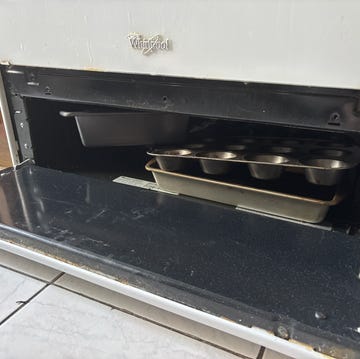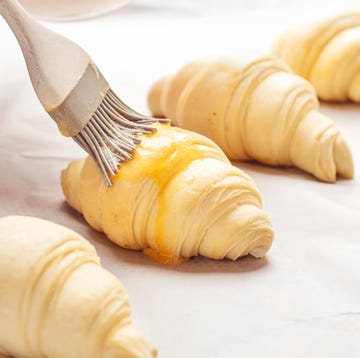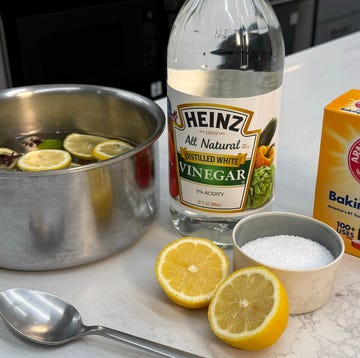There are a few important considerations when setting your fridge up for success. From investing in the right organizers to placing food on the correct shelves, optimizing your refrigerator can help you make the best use of your food. But there's one crucial aspect that many home cooks overlook: the temperature.
Your fridge likely has a dial somewhere inside that can adjust the temperature from cold to colder. Every model varies, which makes it difficult to decipher the right setting. But what climate is the right one? What happens to your food if the storage temperature is off? We consulted experts to unpack everything you need to know about your refrigerator.
What's The Right Temperature For Your Fridge?
Bacteria flourishes in your food in a very specific climate. This range, known as the temperature danger zone, is between 40 and 140 degrees Fahrenheit. The cooler climate in your fridge should strike a delicate balance. You want the temperature below 40 degrees, but you don't want it low enough to freeze your food.
According to the FDA, any temperature below 40 degrees is fair game. But Shawn Matijevich, lead chef-instructor of Online Culinary Arts & Food Operations at the Institute of Culinary Education, suggests going a bit lower. "All of the items in the refrigerator are going to have ideal temperature ranges to store them, but 35 to 38°F strikes a nice balance," he says.
Depending on the model you have, the temperature dial in your refrigerator may vary. "Many home refrigerators have a temperature gauge," says Jason Reese, a personal injury attorney specializing in foodborne illnesses. "Though if yours is older, you can get a refrigerator thermometer to ensure it is keeping your food stored at the proper temperature."
But, just like with any environment, the temperature won't be consistent across the board. "The coldest spots will be at the back and the bottom since cold air sinks," Reese explains. Matijevich adds that, because of these low temperatures, those areas are "great for extending the shelf life of meats."
On the other hand, the door of your fridge will often be the warmest because it's exposed to the outside air every time you open it. That area is better for ingredients that are more resilient to warm temperatures and less perishable, like cans of soda.
Matijevich also notes that the way you store your food will also affect the overall temperature. "There can also be warmer spots where there is less airflow," he explains. Tightly packed areas tend to reach higher temperatures because the cool air of the fridge can't freely pass through.
What Happens To Your Food When Stored At The Wrong Temperature?
The impact of incorrect fridge temperatures will vary, based on what setting you're on and which foods are affected. First, let's unpack what happens when your refrigerator skews too warm.
To put it simply, a fridge that's too warm will make your food expire faster and put you at risk of contracting a foodborne illness. When your food sits in the temperature danger zone, it provides a hospitable environment for bacteria to multiply.
The type of bacteria present depends on a multitude of factors but can include serious strains like E. coli and Salmonella. You want to minimize the time your food spends in the temperature danger zone—whether you're cooking them or storing them—to avoid getting sick.
A fridge that skews too cold is arguably better, in the sense that it won't make you ill, but the outcome is also less than ideal. When temperatures drop, your food can freeze. It's not a big deal when it comes to meat or leftovers, but it can destroy more delicate ingredients. That's especially true when it comes to fresh produce.
When food freezes, and its water content transitions from a liquid to a solid, those molecules expand. This can irreparably damage the cell walls of fruits and vegetables, which will change the texture for the worse. Even when thawed again, "these items tend to take on a mushy texture and lose flavor," says Reese.
The impact freezing will have on your food is greater the more delicate it is, which is why low temperatures are especially tough on leafy greens and herbs. They're not unsafe to eat, per se, but Reese says they won't be "particularly palatable." The temperature of a fridge is often overlooked, but setting it correctly is critical to avoid wasting food and degrading the quality of your ingredients.




